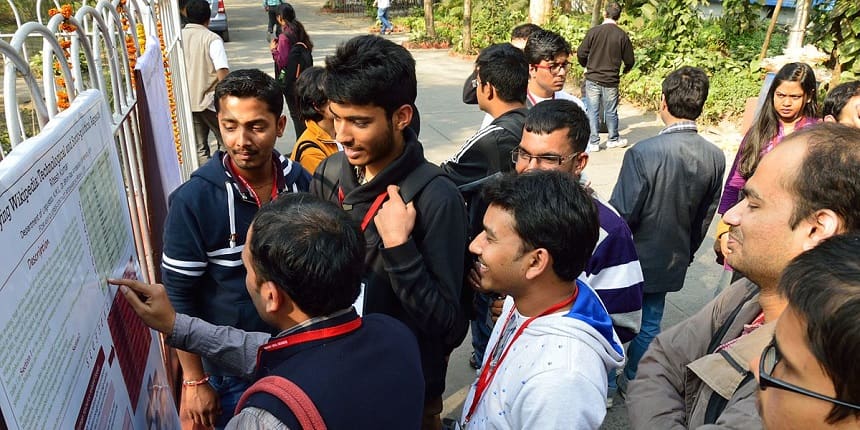GATE 2025 Syllabus: Computer science paper has 10 sections; list of topics
Vagisha Kaushik | August 8, 2024 | 11:18 AM IST | 2 mins read
GATE 2025 registration will commence from August 24 at gate2025.iitr.ac.in.
GATE Previous Year Question Paper's
Download GATE previous year question papers to understand exam pattern and difficulty level. Practice with these papers to boost your preparation and improve your score.
Check Now
NEW DELHI: The Graduate Aptitude Test in Engineering (GATE) 2025 syllabus for the computer science and information technology (CS) paper has 10 sections. The Indian Institute of Technology (IIT) Roorkee released the syllabus and paper pattern for GATE 2025 on the official website, gate2025.iitr.ac.in.
GATE 2026: Preparation Tips | GATE PYQ's | Last 3 Month's Preparation
GATE 2026 Preparation: Chemical Engineering | CSE | Mechanical Engineering
Online MBA: Guide | Top Online MBA Universities India | Online MBA at IIMs
GATE registration 2025 will commence from August 24. The exam will be conducted on February 1, 2, 15, and 16 for 30 test papers. GATE 2025 scores will be used by the IITs and other participating institutions for admitting students to their MTech programmes.
GATE Computer science syllabus 2025
The section-wise topics in GATE computer science syllabus are as follows:
Section 1: Engineering mathematics | |
Discrete mathematics | Propositional and first order logic. Sets, relations, functions, partial orders and lattices. Monoids, Groups. Graphs: connectivity, matching, colouring. Combinatorics: counting, recurrence relations, generating functions. |
Linear algebra | Matrices, determinants, system of linear equations, eigenvalues and eigenvectors, LU decomposition. |
Calculus | Limits, continuity and differentiability, Maxima and minima, Mean value theorem, Integration |
Probability and statistics | Random variables, Uniform, normal, exponential, Poisson and binomial distributions. Mean, median, mode and standard deviation. Conditional probability and Bayes theorem |
Section 2: Digital logic | |
Boolean algebra. Combinational and sequential circuits. Minimization. Number representations and computer arithmetic (fixed and floating point). | |
Section 3: Computer organization and architecture | |
Machine instructions and addressing modes. ALU, data‐path and control unit. Instruction pipelining, pipeline hazards. Memory hierarchy: cache, main memory and secondary storage; I/O interface (interrupt and DMA mode). | |
Section 4: Programming and data structures | |
Programming in C. Recursion. Arrays, stacks, queues, linked lists, trees, binary search trees, binary heaps, graphs. | |
Section 5: Algorithms | |
Searching, sorting, hashing. Asymptotic worst case time and space complexity. Algorithm design techniques: greedy, dynamic programming and divide‐and‐conquer. Graph traversals, minimum spanning trees, shortest paths. | |
Section 6: Theory of computation | |
Regular expressions and finite automata. Context-free grammars and push-down automata. Regular and context-free languages, pumping lemma. Turing machines and undecidability. | |
Section 7: Compiler design | |
Lexical analysis, parsing, syntax-directed translation. Runtime environments. Intermediate code generation. Local optimisation, Data flow analyses: constant propagation, liveness analysis, common sub-expression elimination. | |
Section 8: Operating System | |
System calls, processes, threads, inter‐process communication, concurrency and synchronization. Deadlock. CPU and I/O scheduling. Memory management and virtual memory. File systems. | |
Section 9: Databases | |
ER‐model. Relational model: relational algebra, tuple calculus, SQL. Integrity constraints, normal forms. File organization, indexing (e.g., B and B+ trees). Transactions and concurrency control. | |
Section 10: Computer networks | |
Concept of layering: OSI and TCP/IP Protocol Stacks; Basics of packet, circuit and virtual circuit switching; Data link layer: framing, error detection, Medium Access Control, Ethernet bridging; Routing protocols: shortest path, flooding, distance vector and link state routing; Fragmentation and IP addressing, IPv4, CIDR notation, Basics of IP support protocols (ARP, DHCP, ICMP), Network Address Translation (NAT); Transport layer: flow control and congestion control, UDP, TCP, sockets; Application layer protocols: DNS, SMTP, HTTP, FTP, Email. | |
Follow us for the latest education news on colleges and universities, admission, courses, exams, research, education policies, study abroad and more..
To get in touch, write to us at news@careers360.com.